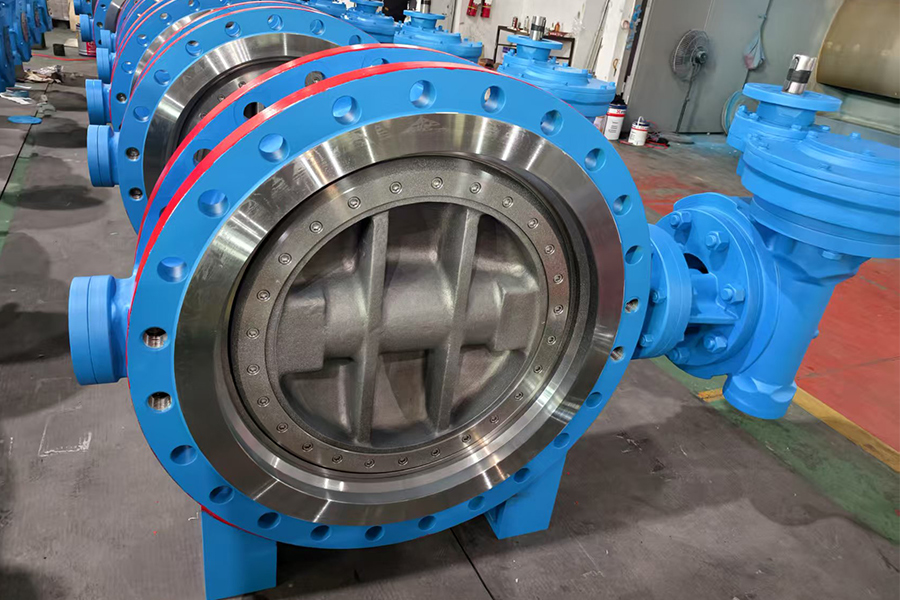2025-06-16
The Cast Steel Electric Operated Butterfly Valve combines a butterfly-style disc mechanism with an electric actuator for automated operation. Its primary components include a cast steel valve body, a central disc, a sealing ring, a shaft (or stem), and an electric actuator that enables remote or programmable actuation. The use of cast steel in the body and structural parts provides the necessary mechanical strength to withstand varying flow conditions and internal pressures, making the valve ideal for medium to high-pressure environments.

The core material of the Cast Steel Electric Operated Butterfly Valve is typically carbon steel or alloyed steel formed through casting. Cast steel is defined by its combination of toughness, ductility, and weldability. Key material characteristics include:
Cast steel offers high tensile and yield strength, which ensures that the Cast Steel Electric Operated Butterfly Valve maintains structural integrity under operational stresses. This strength is essential when the valve is installed in high-pressure pipelines or systems carrying abrasive or dense media.
One of the prominent advantages of cast steel is its impact resistance, even at low temperatures. This property makes the Cast Steel Electric Operated Butterfly Valve suitable for outdoor or cryogenic applications where sudden pressure fluctuations or vibrations may occur.
Cast steel materials are relatively easy to machine, drill, and weld, which allows for precise manufacturing and easier customization. This is particularly beneficial for tailoring the Cast Steel Electric Operated Butterfly Valve to fit specific flange connections or special flow requirements.
The valve can endure high operational temperatures, especially when alloyed with chromium, molybdenum, or nickel. Thermal resistance ensures the Cast Steel Electric Operated Butterfly Valve retains shape and sealing effectiveness in boiler, furnace, and steam pipeline systems.
Although standard carbon cast steel has limited corrosion resistance, many Cast Steel Electric Operated Butterfly Valves are made from low-alloy steel grades or coated internally and externally with corrosion-resistant layers. Optional stainless-steel components or epoxy coatings further enhance their durability in corrosive environments.
The selection of cast steel as the base material for this valve type offers several practical advantages:
Longevity and Reliability
The robust nature of cast steel contributes to the long service life of the Cast Steel Electric Operated Butterfly Valve, especially in cyclic flow conditions and challenging fluid environments.
Pressure Class Compatibility
Cast steel valves can be manufactured to meet various ANSI or DIN pressure class ratings, enabling wide application across both low-pressure and high-pressure systems.
Safety under Stress
In emergency situations or transient surges, the cast steel body resists deformation or catastrophic failure, ensuring continued containment of flow and reducing risk to surrounding equipment or personnel.
Cost-Effective Performance
Compared with stainless steel or exotic alloys, cast steel provides a favorable balance of strength and cost, making the Cast Steel Electric Operated Butterfly Valve a practical choice for many industries.
Application Environments and Material Suitability
The Cast Steel Electric Operated Butterfly Valve is particularly suited for:
Water and Wastewater Systems
Where moderate corrosion resistance, structural durability, and full-port flow are needed.
Steam and Heat Transfer Lines
Due to its thermal endurance and mechanical strength under elevated temperatures.
Oil and Gas Pipelines
For safe handling of hydrocarbons and chemical flows in upstream and downstream processes.
Power Generation Facilities
Where the valve handles high-cycle operations with variable temperatures and pressures.
In all these environments, the material characteristics of cast steel provide a dependable foundation for the valve's safe and efficient performance.